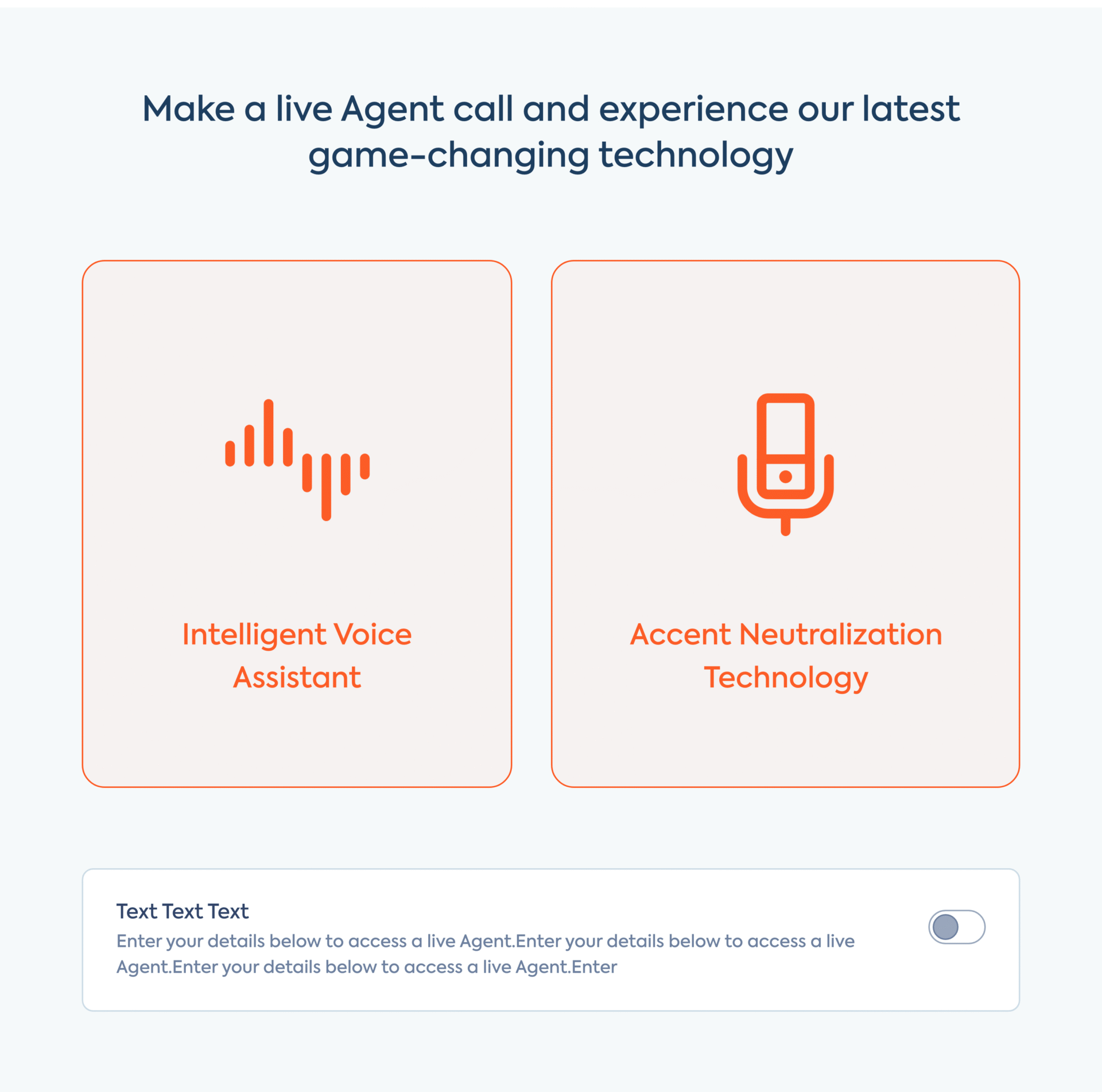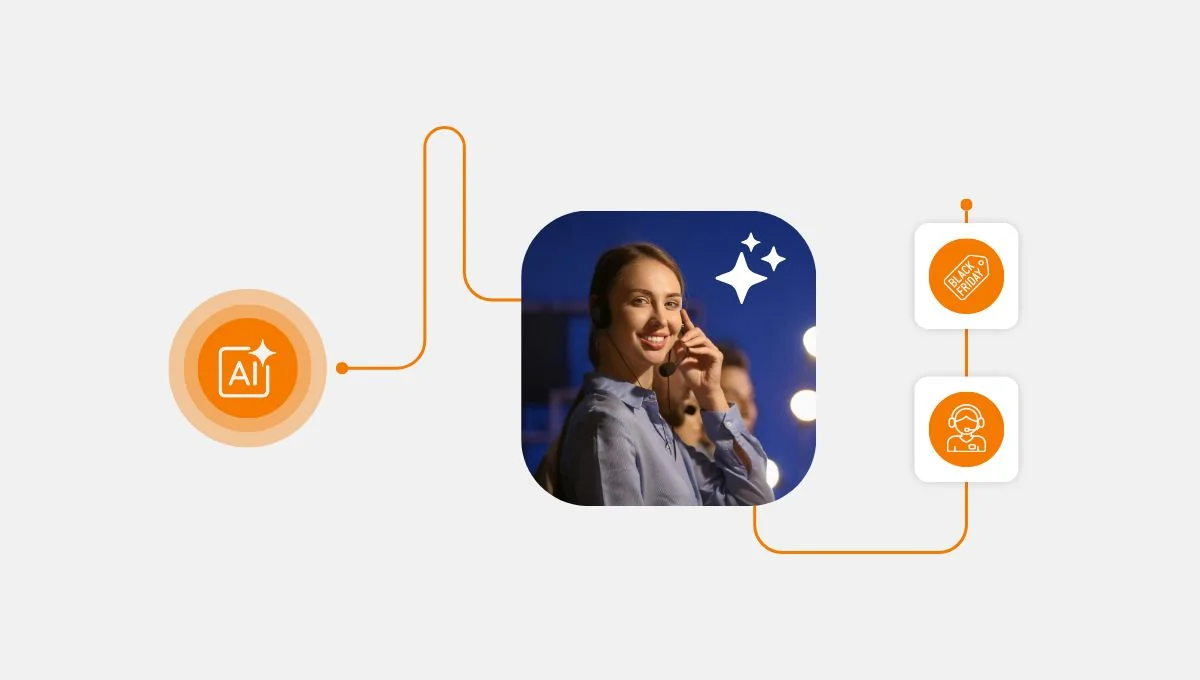Talking to customer service can be a pain, especially when trying to understand what the other person is saying. A missed word here, a confusing accent there, and suddenly you’re on your third call trying to sort out a simple issue.
Now imagine that happening millions of times a day. That’s the reality for many brands trying to keep customers happy.
Accent neutralization tech is stepping in to clean up the mess. And it’s proving to be a solid upgrade in the world of customer experience (CX).
Let’s see why?
How Accent does Neutralization Work?
What is the first step of great customer service? Understanding the problem.
But in plenty of call centers, especially ones based overseas, agents have accents that might be tricky for customers to follow. And when that happens:
- Calls get longer,
- Tempers flare, and
- Satisfaction tanks.
🎯According to NewVoiceMedia, U.S. businesses lose about $62 billion a year thanks to bad customer service. A big part of that? People just don’t understand each other.
This is where accent reduction tools come in. These systems typically use real-time speech processing powered by AI, particularly deep learning models trained on massive datasets of spoken language.

When an agent speaks, the tool analyzes their speech patterns like:
- Intonation,
- Pronunciation, and
- Phoneme articulation
And subtly modifies them to align more closely with a standardized or target accent (like neutral American English).
This is often done using digital signal processing (DSP) and neural vocoders that reconstruct speech with altered accent markers while preserving the speaker’s natural tone and emotional cues.
So instead of sounding robotic or flat, agents still sound like themselves.

Helping Agents Sound Human
You could train your agents to master different accents, but that takes time and money. And let’s not forget, your agents aren’t hired for their accent, they’re there to solve problems.
So instead of exhausting them with pronunciation drills, it makes way more sense to let technology do the heavy lifting.
With today’s speech tech, agents can improve how they sound almost instantly.
Why does that matter? Because:
- Calls are easier to follow: Customers don’t have to keep saying “can you repeat that?” because everything’s clearer the first time.
- Fewer mix-ups: With better clarity, there are fewer chances for confusion or errors.
- Agents feel more confident: They know they’re being understood, which helps them focus on solving problems.
- Shorter calls: When both sides understand each other, the conversation doesn’t drag on.
- More problems solved on the first call: Clear communication means customers get what they need without having to call back.
Put it all together, and you’ve got happier customers and stronger teams. That’s a win-win.
Clear Speech, Please
For global companies, delivering solid service everywhere is no easy feat. Different countries mean different languages, cultures, and yep, accents. Even if your agent speaks perfect English, the accent can still be a stumbling block.
That’s why you need CX innovation. Do not hesitate to give accent neutralization tools a try. They help keep conversations smooth no matter who’s talking or where they’re from.
However, while the benefits are compelling, it’s important to understand the challenges businesses might face when implementing them, and more importantly, how to handle those challenges smartly.
Let’s look at some of them.
1. Potential loss of authenticity: Over-processing speech might make agents sound too uniform or lose regional personality.
Solution: Use customizable settings that allow businesses to fine-tune how much the accent is neutralized, preserving natural tone and emotional range.
2. Implementation complexity: Real-time speech processing requires robust infrastructure and testing.
Solution: Choose providers offer scalable, cloud-based solutions with flexible APIs and minimal on-premise requirements.
3. Privacy and compliance concerns: Handling voice data involves adhering to data protection regulations.
Solution: Work with vendors who are compliant with major standards like GDPR, HIPAA, and offer strong encryption and anonymization features.
4. Not foolproof: Some accents or speech styles might still pose challenges.
Solution: Continuously train AI models on diverse linguistic data and regularly update them to improve recognition and clarity.
Call Center Studio not only uses real-time speech enhancement tech, but also addresses every major concern businesses might have:
- Customizable settings that preserve speaker authenticity,
- Scalable, cloud-native infrastructure that simplifies implementation,
- Rigorous compliance with data privacy regulations
Plus, trained AI ensures consistent performance across a wide range of accents. It’s a one-stop shop for companies serious about leveling up their global CX game.
When and How to Implement It
Now you know all about accent neutralization tools. Now let’s look at how you can implement it step by step.
If your support team is struggling with long calls, repeated explanations, or negative feedback tied to communication gaps, it’s time to address accent clarity.
- Evaluate solutions: Research real-time accent neutralization tools that align with your scale, infrastructure, and CX goals. Prioritize platforms that are cloud-based and easy to integrate.
- Test and train: Run pilot programs with speech enhancement features. Make sure your agents are comfortable and the tech improves comprehension without stripping their personality.
- Implementation plan: Consider potential hurdles like compliance, customization, and scalability. Choose vendors that already have solutions in place.
- Roll it out: Once tested, deploy it across your teams. Use metrics like average handle time, CSAT, and first-call resolution to track impact.
- Continuously optimize: Accent models need updates, just like your support scripts. Work with your provider to keep things accurate, inclusive, and aligned with customer needs.
Accent neutralization isn’t just for the call center; any team that talks to customers can benefit.
Give it a try, you won’t regret it.





